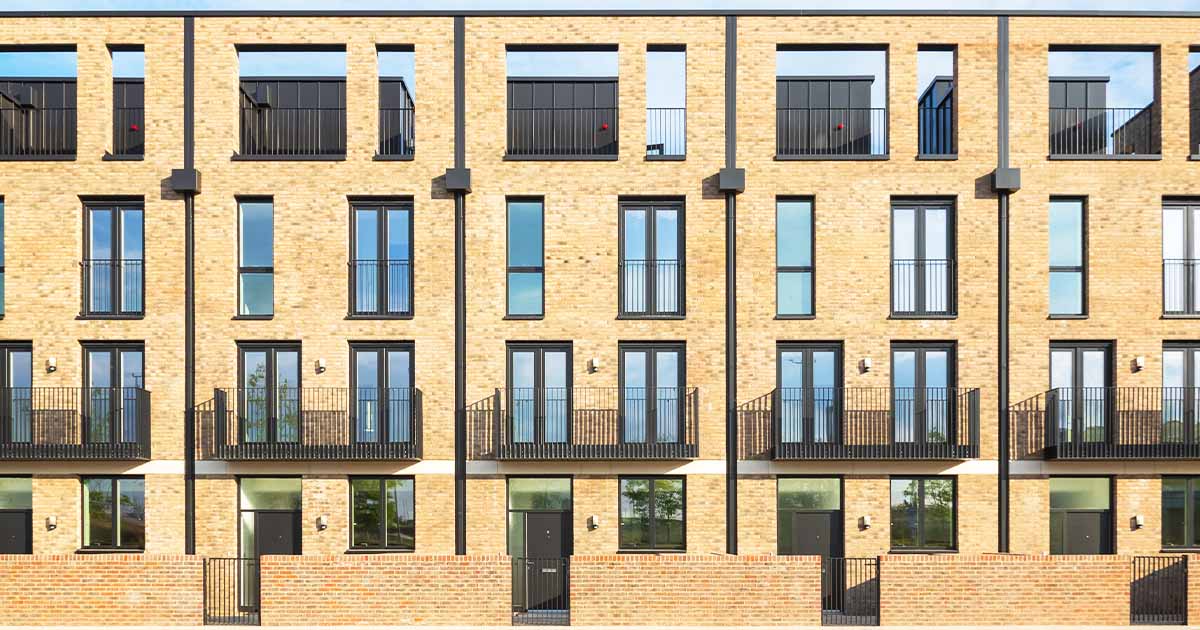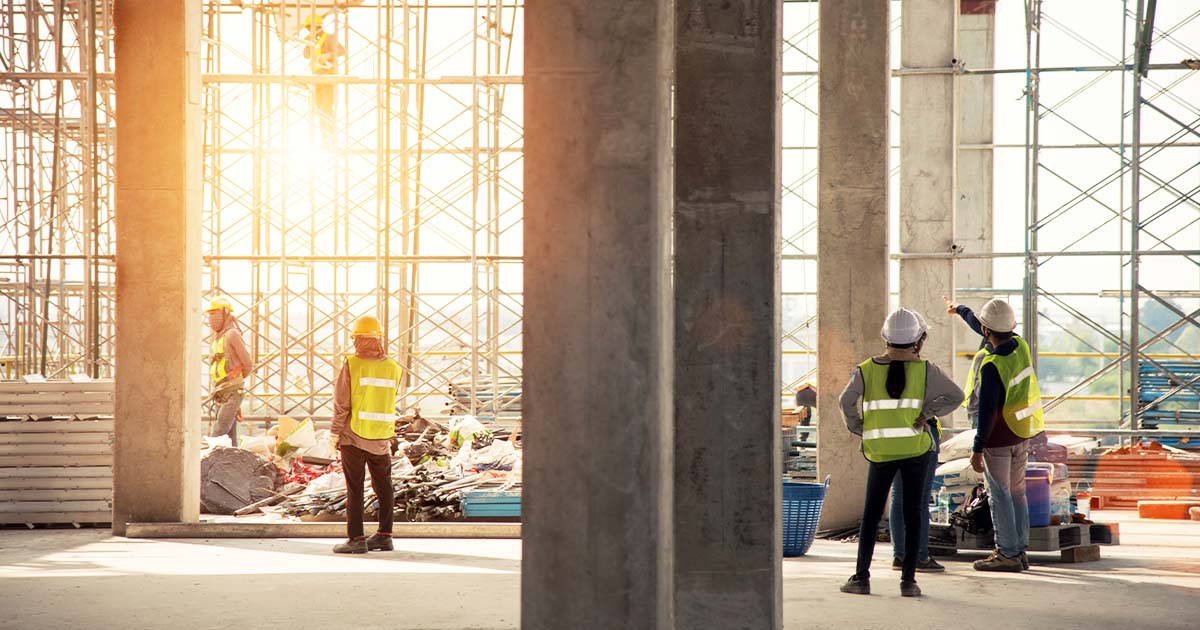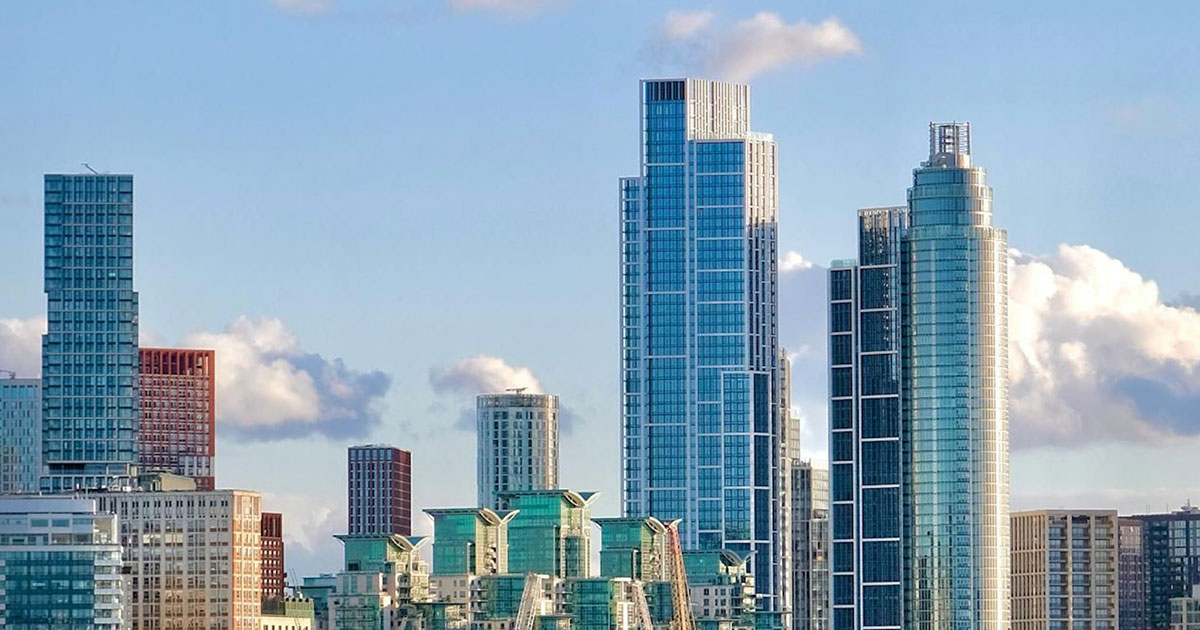Building Safety Act 2022 ‘key information for developers of higher-risk buildings’

On 1 October 2023, a host of secondary legislation published under the Act came into force. It created new obligations for developers of Higher-Risk Buildings, which supplement those already in place.
This note gives an overview of the obligations that a developer of a new Higher-Risk Building will now face.
The Responsible Actors Scheme
The Responsible Actors Scheme is intended to ensure that developers remedy any defects in existing buildings for which they are responsible. It works by requiring certain developers to enter into a remediation contract with the government and imposes consequences if they do not.
You will be eligible to apply for the Scheme if:
- your principal business (more than 50%) has been residential or mixed-use property
- development, you meet the Profits Condition and you have developed or refurbished (excluding work done solely as a contractor) one or more residential buildings over 11 metres in height in England between 5 April 1992 and 4 April 2022;
- you are a developer who meets the Profits Condition and have developed or refurbished (excluding work done solely as a contractor) two or more buildings eligible for a relevant government cladding remediation scheme; or
- you are a developer who has developed or refurbished (excluding work done solely as a contractor) at least one residential building over 11 metres in height that qualifies for remediation under the terms set out in the developer remediation contract, and you voluntarily choose to join the Scheme.
If you are eligible to become a member of the Scheme, you must:
- enter into a developer remediation contract with the government;
- in accordance with the contract terms:
- identify residential buildings that are over 11 metres in height developed or refurbished by you over the 30 years ending on 4 April 2022, and any of those buildings known to have life-critical fire safety defects;
- remediate and/or mitigate or pay for the remediation/mitigation of life-critical fire safety defects in those buildings;
- reimburse government schemes for taxpayer-funded work to remediate and/ or mitigate defects in those buildings;
- not undertake restructurings or certain other steps which would mean that you cannot fulfil your obligations under the Scheme;
- meet all other obligations of the developer remediation contract, including keeping building owners, residents and the government updated on the progress of remediation works.
- comply with requests for information made by the Secretary of State pursuant to the contract and regulations, to enable the Secretary of State to carry out his monitoring and enforcement functions; and
- not take steps to avoid your obligations under the Scheme or defeat its aims.
If you do not do so, the consequences are severe. They include:
Planning prohibitions – You will not be able to carry out major development of land, which includes 10 or more residential units, residential schemes on a site of at least 0.5 hectares in size, commercial development of 1000m or more of floor space, and development sites over 1 hectare in size
Building control prohibitions – You will not be able to give or receive relevant notices (i.e., building commencement notices), certificates, and applications.
The dutyholder roles
The legislation creates new roles and responsibilities. The Building Safety Regulator (BSR) explains that, as a developer, your main duties will be as follows:
- to make (and review as necessary) suitable arrangements for planning, managing and monitoring a project, including the allocation of sufficient time and resource, to deliver compliance with building regulations. In practice, this means appointing the right people, with the right competencies (the skills, knowledge, experience and behaviours or organisational capability) for the work and ensuring that they have systems in place to ensure compliance with building regulations;
- where there are several firms working on different aspects of the project, to appoint a Principal Designer to be in control of design work and a Principal Contractor to be in control of the building work;
- to provide building information to every designer and contractor on the project and ensure that they are aware that the project includes any existing or proposed Higher- Risk Building work; and
- to co-operate and share information with other relevant duty holders.
Building control regime for Higher-Risk Buildings
The new building control regime, colloquially known as the ‘Gateway Regime’, commenced on 1 October 2023. There are three ‘gateways’, one during the planning phase, another during the construction phase, and the final gateway at the completion of the project. This section deals with the three ‘gateways’.
Application process
Before building works start on a new Higher- Risk Building a building control application must be secured. The application must be submitted to the BSR, which has 12 weeks to assess the application. As a developer, you will have overall responsibility for the application. The application must contain sufficient information to show how the building when built will:
- satisfy all applicable functional requirements; and
- demonstrate how the developer intends to manage the construction activity.
If it is determined that the new building will be a Higher-Risk Building, it must include the following documents:
- a competence declaration;
- a building regulations compliance statement;
- a fire and emergency file;
- a construction control plan;
- a change control plan;
- a mandatory occurrence reporting plan; and
- a partial completion strategy.
Each of these documents has particular aims and requirements and will need to be considered in detail.
Golden Thread
The “Golden Thread” of information in relation to a building is the information that allows a person to understand a building and the steps needed to keep both the building and people safe, now and in the future. The legislation places requirements for the Golden Thread to be managed throughout the life cycle of a building.
Once you have building control approval, you must give the BSR at least 5 days notice before commencing work. The Principal Contractor will then be responsible for managing the Golden Thread. That said, as a developer you must be aware of the Principal Contractor’s responsibilities and appropriately monitor whether they are performing their duties. Furthermore, the practical reality is that the Principal Designer will need to collaborate with the Principal Contractor, so this should be kept at the forefront of your mind. The Golden Thread must be:
- kept digitally;
- kept securely;
- a building’s single source of truth;
- available to people who need the information to do a job;
- available when the person needs the information; and
- presented in a way that the person can use.
Construction phase
There is no doubt that throughout the construction phase of any project, changes occur. There are new processes that must be followed in relation to changes. The process will depend on whether the change is a Major Change or a Notifiable Change. There are detailed provisions regarding what will amount to each, and legal advice should be sought if the position is unclear. The BSR has the power to change the category of any change, where it deems appropriate to do so.
It is essential that any Safety Occurrences during the construction phase are reported to the BSR, via the MOR system. As the developer, you will need to take all reasonable steps to ensure that the Principal Designer and the Principal Contractor have put an effective MOR system in place.
Completion certificates
Higher-Risk Buildings need a completion certificate to enable the building to be registered or occupied.
Developers must now submit a completion certificate application once notifiable building work is complete. Occupation will not be allowed unless the BSR issues a completion certificate, which may take at least 8 weeks.
This application comprises of the following (which will be stored in the Golden Thread):
- ‘as built’ plans and information;
- final versions of all accompanying documents that accompanied the initial application;
- any controlled changes and the change control log;
- information captured through construction;
- information captured through commissioning; and
- information captured through final functional inspections.
Upon receipt of the application, the BSR will conduct its final inspections of the building work and, if satisfied, will issue the completion certificate. If not, the BSR must reject the application. Errors can be corrected – but this will no doubt incur unwanted additional time costs and pressures.
Non-compliance and enforcement
Under the new secondary legislation, the BSR’s power to enforce non-compliance is strengthened. The table below identifies the offence of non-compliance and the penalty associated with the offence.
| Offence | Scope of power | Penalty | Reference |
| Providing false or misleading information to BSR | Criminal offence Triable as an either way offence | Unlimited fine 1 year imprisonment (magistrates) 2 years imprisonment (crown) | Section 24 BSA22 |
| Contravention of building regulations | Criminal offence Triable as an either way offence No time limit Compliance notice must be served within 12 months Stop notice | Unlimited fine Fine for each day the contravention continues (£200) | Section 35 BA84 |
| Failure to comply with compliance and stop notice | Criminal Offence | Unlimited fine 1 year imprisonment (upon summary conviction – magistrates) 2 years imprisonment (upon indictment – Crown) | Section 35B BA84 Section 35C BA84 |
| Removal of offending work | Time limit extended to 10 years | Notice to remove contravening work Chargeable work | Section 36 BA 84 |
It is critical to take note that directors and managers of companies may be found liable for the criminal offences identified above.
Conclusion
In this current post-Grenfell climate, and in the wake of the host of obligations created by the secondary legislation, it is critical that developers of new Higher-Risk Buildings are acutely aware of their obligations and seek legal and other professional advice where necessary. The BSR has the power to enforce penalties against the company as well as directors and managers personally.
Glossary
Act: Building Safety Act 2022.
BSR (Building Safety Regulator): The Health and Safety Executive, in its capacity as Building Safety Regulator.
Higher-Risk Building: A building which is at least 18 metres in height (or has at least seven storeys) and contains at least two residential units, or is a care home or is a hospital. Inc student accommodation. Does not include secure residential institutions; hotels; military barracks and living accommodation for military personnel.
Major Change: A change that would undermine the basis by which building control approval was granted.
MOR: Mandatory Occurrence Reporting.
Notifiable Change: A change that potentially has an impact on compliance with building control approval.
Profits Condition: Your average annual operating profit in the financial years ending 2017, 2018 and 2019 was greater than or equal to £10,000,000.00.
Safety Occurrence: A safety occurrence (structural safety or fire safety) in relation to the design of a building or an incident or situation during construction for which the building, if occupied without the risk being remedied, is likely to present a risk of a significant number of deaths or serious injury to a significant number of people.
The Scheme: Responsible Actors Scheme.




